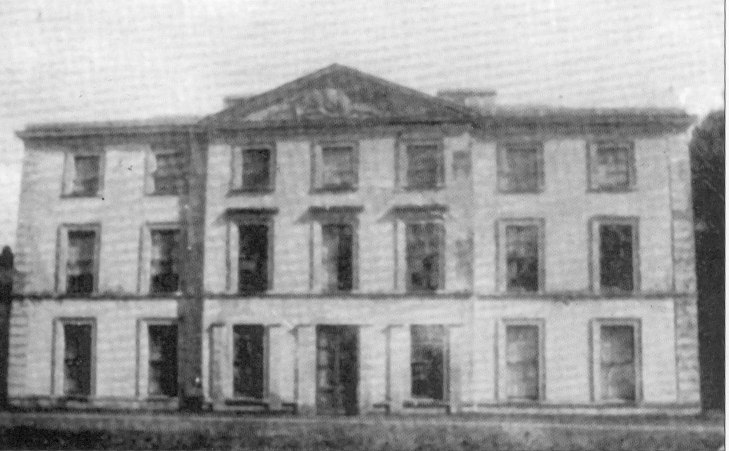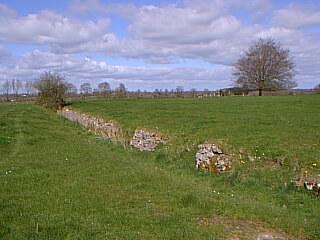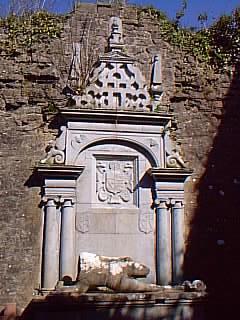

 The land of Foxhall estate originally belonged to the O'Farrells,
who lived in Rathreagh Castle. (Rath Riabhach means grey, or speckled fort) Sir
Patrick Fox obtained the land and
castle somehow, and both were officially passed to Sir Patrick's son
Nathaniel in 1622, under Surrender and Regrant. The Foxes remained
as landlords there until the 19th. century. Rathreagh was the old name
of the parish, and it was Nathaniel who changed the name to Foxhall.
The Fox estate was worked by cottiers and small farmers.
The land of Foxhall estate originally belonged to the O'Farrells,
who lived in Rathreagh Castle. (Rath Riabhach means grey, or speckled fort) Sir
Patrick Fox obtained the land and
castle somehow, and both were officially passed to Sir Patrick's son
Nathaniel in 1622, under Surrender and Regrant. The Foxes remained
as landlords there until the 19th. century. Rathreagh was the old name
of the parish, and it was Nathaniel who changed the name to Foxhall.
The Fox estate was worked by cottiers and small farmers.
A lawn fronted the building where they held picnics and parties.
 A sunken ditch, three feet below ground level, runs
down the center of a ten-acre field in front.
This type of boundary
ditch is called a ha-ha and was added by Richard Maxwell Fox, a Member
of Parliament. It served to keep the cattle from grazing too close
to the front door of the house, but did not spoil the view . Richard
Maxwell Fox owned 4172 acres, and was known as a good
and kind employer during the Famine.
A sunken ditch, three feet below ground level, runs
down the center of a ten-acre field in front.
This type of boundary
ditch is called a ha-ha and was added by Richard Maxwell Fox, a Member
of Parliament. It served to keep the cattle from grazing too close
to the front door of the house, but did not spoil the view . Richard
Maxwell Fox owned 4172 acres, and was known as a good
and kind employer during the Famine.
 Inside the
Church lies a statue which is known locally as the Stone Man
of Foxhall.
Inside the
Church lies a statue which is known locally as the Stone Man
of Foxhall.
Local legend tells that Nathaniel Fox, stated in
his will that a monument be erected in his honour. Statues
of himself and his wife were commissioned in France. When
the statues were being shipped to Ireland, a terrible storm
arose in the Bay of Biscay and the ship was in danger of sinking.
It was decided to allow the statue of his wife to be thrown overboard,
but not Nathaniel's! His statue, a full size figure clad in armour,
with an engraving of the crest and coat of arms of the Fox family now
lies over his tomb in the old Church in Foxhall, but his head and leg
are missing.

